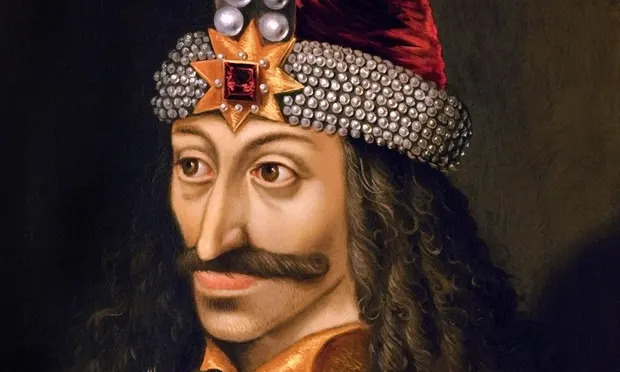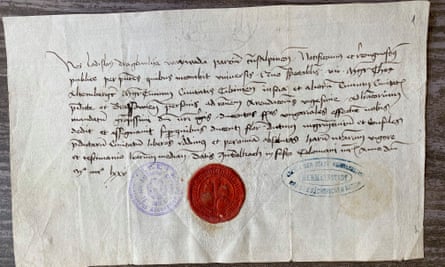Scientists are hoping ‘historical biomolecules’ on a 15th-century missive written by Vlad Dracula, the inspiration for Bram Stoker’s vampire count, will reveal more about him.
 A 16th-century portrait of Vlad III, more commonly known as Vlad the Impaler or Vlad Dracula. Photograph: Ian Dagnall Computing/Alamy
A 16th-century portrait of Vlad III, more commonly known as Vlad the Impaler or Vlad Dracula. Photograph: Ian Dagnall Computing/Alamy
–
–
On a dark and stormy night in May this year, exactly 125 years to the day that Bram Stoker published the definitive vampire novel, two people pored over a document more than 500 years old in a room in Transylvania – signed by Dracula himself.
Gleb and Svetlana Zilberstein’s mission? To extract genetic material from the letters written by Vlad Dracula – the historical inspiration for Stoker’s vampiric count – left there by his sweat, fingerprints and saliva.
And from that, the pair, who have been dubbed “protein detectives” – though they prefer “historical chemists” – can build up a picture of not only the physical makeup of the Wallachian warlord who became known as Vlad the Impaler for his practice of displaying his enemies on stakes, but also the environmental conditions in which he lived.
“It was mystical that we were extracting Dracula’s molecules on the day that Bram Stoker’s novel was published 125 years ago,” said Gleb Zilberstein. “We did not specifically plan this date. All night, after the extraction of Dracula’s molecules, it rained, dogs howled and lightning flashed. It was really a very magical atmosphere. Count Dracula blessed his release from the Romanian archive.”
–
Zilberstein’s sense of the theatrical belies the pioneering science at the heart of what he and Svetlana do. He said: “Our job is to find the biochemical traces left from the time when the historical object was created or when it was used by some historical figure.
“When ‘historical biomolecules’ are found, we begin to analyse them. That is, to determine the molecular composition and age of historical molecules. We mainly determine proteins and metabolites.”
“These molecules are more stable than DNA and provide more information about the environmental conditions, health, lifestyle, nutrition of the historical person to whom the historical molecules belonged.”
The Zilbersteins were born in Kazakhstan and for the last 26 years have lived and worked from Tel Aviv, Israel. Together with Professor Pier Giorgio Righetti of the Polytechnic University of Milan, they developed the biochemical analysis used to extract proteins from items touched or worn by people long dead.Their first experiment was on the original manuscript of The Master and Margarita by the Soviet writer Mikhail Bulgakov.
Gleb Zilberstein said: “We found traces of morphine and kidney pathology proteins in the pages of the manuscript, proving he wrote it while under the influence of drugs that he used to relieve acute pain in the kidneys.
“After Bulgakov, we took up Anton Chekhov. We analysed the shirt in which he died and his last letter. Chekhov suffered from tuberculosis and used various substances as painkillers, but he died of a stroke. After Chekhov, we began to investigate George Orwell’s letter to Moscow and found traces of tuberculosis, which he contracted in Spain.”
Zilberstein said the analysis provides a snapshot of that person’s lifestyle and the factors in the environment around them when they handled whatever piece of evidence is being worked upon.
In the case of Vlad Dracula, this included a letter he wrote to the people of Sibiu, which is located in present-day Romania, on 4 August 1475, informing them he would shortly take up residence in their town.
Zilberstein said: “With our analysis, we expect to receive a snapshot of a molecular portrait of Vlad Dracula when he wrote or signed these letters – that is, his health, what he ate and what the atmosphere was like around [him].”
–
Topics
Most viewed
















